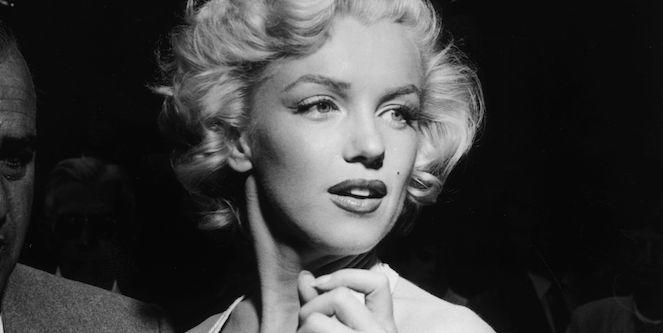Marilyn Monroe’s battle with endometriosis is often ignored – but it’s a vital part of her story

Marilyn Monroe has been the subject of global fascination for several decades and she’ll always be seen as a sparkling Hollywood star. Most recently, Kim Kardashian paid homage to Monroe’s iconic persona when she controversially wore the star’s dress to the 2022 Met Gala. And now following the release of the new Netflix film Blonde, Monroe’s life is in the spotlight once more.
But in addition to the much-loved star’s glamorous signature style and inimitable features, people have also long since been fixated with Monroe’s suffering. She also remains objectified 60 years after her premature death. With scenes in Blonde said to be sexist, exploitative and invasive (with rape, forced abortion and abuse featuring throughout), the pain endured in her short life is being pored over for entertainment purposes again. In fact, director Andrew Dominik even called the film “salacious”, adding he wasn’t “concerned with being tasteful” when depicting Monroe’s life.
Blonde is based on Joyce Carol Oates’ biographical novel of the same name. It is not a factual account, but that will likely be lost among many viewers. There is also one hugely significant detail which is regularly overlooked when talking about Monroe. This is that she is believed to have lived with severe endometriosis.
The debilitating gynaecological disease affects 1 in 10 women and the average time between first visiting a doctor and receiving a diagnosis is still an unforgivable 7.5 years. Endometriosis is a condition where tissue similar to the lining of the womb grows in other places, such as the ovaries and fallopian tubes. But unlike cells that line the womb, endometriosis cells can’t exit the body like a period and while surgical and hormonal treatments do exist, there is no cure or current research breakthrough leading to one, so most sufferers must endure chronic pain.
The disease can be found in areas including the pelvis, diaphragm, bowel, bladder, lungs and even the brain. Symptoms include pain, fatigue, heavy bleeding and depression, with endometriosis potentially affecting every part of a sufferer’s life, including their fertility. It’s well documented that Monroe endured heart-breaking miscarriages in 1956 and 1958, as well as an ectopic pregnancy in 1957, despite desperately wanting a child.
A 2008 paper published about endometriosis by the National Library of Medicine states that as one of the most famous sufferers of endometriosis, Monroe’s severe condition meant “in days before effective conservative surgery or effective medical therapies, it led to progressively increasing use of strong analgesics, tranquilisers and hypnotics.”

I know all too well the excruciating agony of endometriosis and have lived with the disease since my teens, undergoing multiple surgeries and at times, needing a cocktail of strong painkillers including morphine. Endometriosis pain feels like intense, bone-aching agony which has made my legs buckle, leaving me collapsed on the floor. I’ve passed out from its crashing waves flooding my body and have desperately willed the sharp stabbing agony to stop. The isolation of living with this kind of uncontrollable pain is acute, and keenly felt, while articulating the struggle fully seems even harder still.
But Monroe had to weather this unpredictable storm in the public arena surrounded by constant scrutiny about her painkiller use, being late to set and cruelly deemed unreliable, while her three marriages broke down. All of which, living with the sheer agony of endometriosis may have contributed to. We can’t conclude to presume the facts beyond reasonable assumptions, but those with endometriosis know this disease can fracture and destroy the entire ecosystem of a sufferer’s day-to-day life.
In Monroe’s case, this life was lived in a different era and as medical misogyny exists today, it can be fairly reasoned she would have been on the receiving end of much more archaic treatment back in the 1950s and 60s. Indeed, with the description of the 2011 BBC film My Week with Marilyn still referring to her so-called “pent-up neurosis”, isn’t it about time we offered Monroe some respect and validation when it comes to the psychological impact of her traumatic medical history?
This emotional anguish would’ve been compounded further by memories of an abusive childhood. Hollywood sexism and exploitation was rife during her lifetime too, and just one example of this is Hugh Hefner allegedly publishing naked pictures of Monroe without the film star’s consent, despite her never having posed for Playboy. The pain she lived with is unquestionable, and ultimately her extremely sad death at the age of 36 was ruled to be suicide.
Marilyn Monroe’s image is inextricably linked with pop culture and perhaps that’s why so many have tried to take a figurative piece of her. But when doing that, we must recognise the extent of her lived reality. We owe this empathy and care both to the memory of Monroe and the millions of other women with endometriosis who are unwittingly emulating that painful part of the star’s life.
You Might Also Like

 Yahoo Finance
Yahoo Finance 